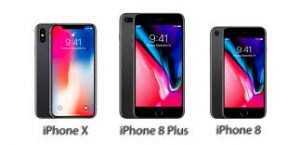A couple of days ago on October 27th, pre-orders for the brand-new iPhone X began. The iPhone X marks the 10th-year anniversary of the release of the first iPhone, something that has completely revolutionized the face of the earth since its creation. This new iPhone will be quite expensive at around $1500 CAD per phone. As a result, many people may buy the recently released iPhone 8 and 8 plus, which began shipment on September 22nd. So far, the iPhone has followed a numerical sequence of numbers, which begs the question: what happened to the iPhone 9?

Source: Wccftech
There are a lot of different theories on why the iPhone 9 was never produced. Some say that Apple really wanted to celebrate the 10th anniversary of the iPhone. This could be the reason Apple named it the “X” and not the “10” as they could potentially release the iPhone 9 at a future date. However, I personally believe this is simply a smart marketing trick from Apple’s headquarters.
The number 10 is considered a major milestone, especially in business. It marks the first time your company or products have been alive for a year containing double digits. In the eyes of consumers, this is also a big deal and they will typically be willing to pay more or wait longer for this milestone. This is because they will usually expect companies to make their products much better than ever before. Looking at McGrath’s Transient Advantage Theory, Apple has been following this method quite closely by ramping up a new product each year and capitalizing on it until the release of the next best thing. It’s very likely that the advantage for the iPhone 9 would be very small and most people would rather save their money to by the much more impressive sounding iPhone 10, or in this case, “X”.
Apple isn’t the first company to do this either. On July 29th, 2015, Windows announced Windows 10, which followed the Windows 8 upgrade. Once again this could have been for a couple of reasons. First off, the number 9 is considered unlucky in Japan and with the significant presence Microsoft has there; the jump would be a smart move on their behalf. The more likely reason was that Microsoft wanted to encourage the majority of their customers who don’t upgrade to the newest product right away, to start upgrading. If they were still on Windows 7 when Windows 8 came out, that would be fine, but if Windows 10 came out, they would feel more pressure to upgrade, giving Microsoft more revenue.
So there’s the answer. There is no iPhone 9 because of simple, yet powerful marketing tools and worldwide superstition.

Source: Vorply
Word Count: 450